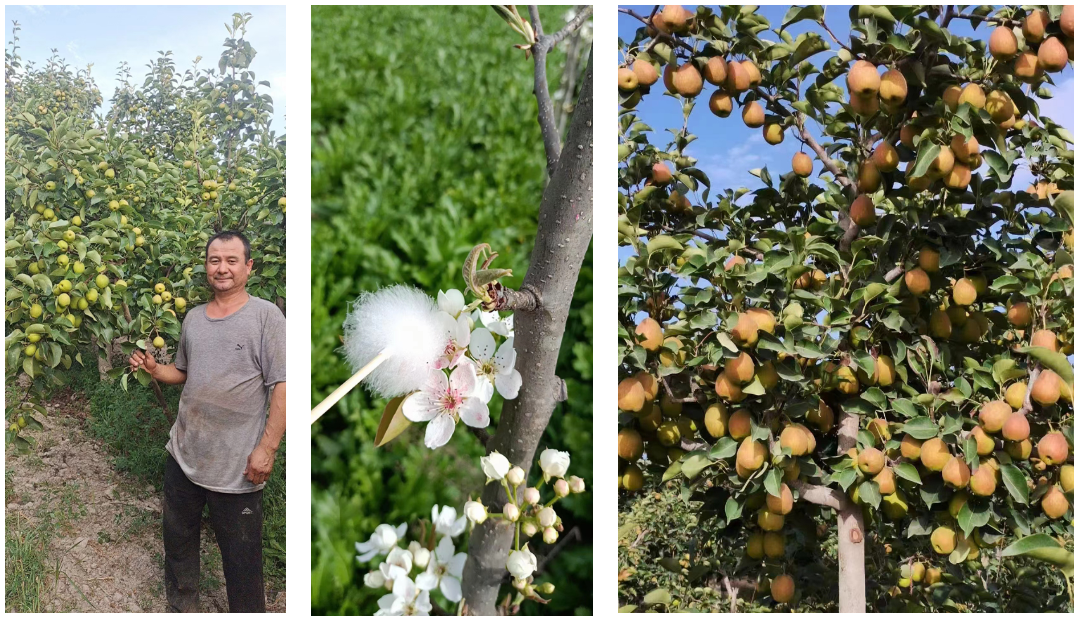Jan . 17, 2024 17:24 Back to list
ARTIFICIAL POLLINATION CAN BRING MAXIMUM HARVEST TO OUR ORCHARD
The pollen grains of most fruit trees are large and sticky, the distance transmitted by wind is limited, and the flowering period is very short. Therefore, if the flowering period meets cold current, cloudy and rainy days, sandstorm, dry hot wind and other bad weather that is not conducive to insect activities, artificial pollination is the only way to increase the yield of orchards.
Most fruit trees are the most well-developed and nutritious. The flowers open first, and the fruit type is correct, and the fruit is large. However, because they open the earliest, they are also most likely to encounter bad weather. They are most likely to fail to bear fruit when they do not meet the flowering period with pollinated varieties. Therefore, artificial pollination is needed.
Natural pollination is random
Where we need results, there may be no results. Where we don't want results, there may be a series of results. Artificial pollination can completely avoid this disadvantage. Where we need results, we will let them result, and which fruit we need to leave, all of which are under our control. In spring, all organs of fruit trees begin to grow actively, which is the time when nutrients are in short supply. Fruit trees need a lot of nutrients to blossom and bear fruit, but on average, we only need 5% of the flowers and fruits to meet our output, and 95% of the nutrients consumed by flowers and fruits are wasted. Therefore, the technique of thinning flowers and buds and fixing fruits with flowers has been advocated. However, under the condition of natural pollination, sometimes a fruit can't stand, or the fruit setting rate is very low, which is not enough at all. How dare you sparse flowers and buds? Artificial pollination technology has completely solved this problem and made it a reality to sparse flowers and buds and determine fruits with flowers. It can not only save a lot of nutrients to ensure the normal growth and development of selected and retained fruits, but also save a lot of fruit thinning labor. It is a real multi task.
Practice has proved that only when there are enough pollen grains on the pistil stigma can we ensure the smooth completion of pollination and fertilization, and ensure that the fruit type is correct, the fruit is large and there is no abnormal fruit. Natural pollination is difficult to do this, so it is inevitable to have uneven fruit, inconsistent size, improper fruit type and many abnormal fruits.
The pollen of fruit trees has direct sensation
That is, the good traits of the male parent will be shown in the female parent, and vice versa. Therefore, according to this point, we can select pollen varieties with better properties for artificial pollination of fruit trees, so as to improve fruit quality, increase fruit flavor, promote fruit coloring, improve the smoothness of peel, increase the number of fruits and improve the commercial value of fruits. Natural pollination can't do this at all. Relatively speaking, the main varieties have good merchantability and high economic value, while the pollinated varieties have poor merchantability and low economic value. At the same time, the more varieties, the more complex management and the higher cost. Using artificial pollination technology, we can plant no or less pollinated varieties, which can not only improve the overall income of the orchard, but also reduce the management cost, save labor, trouble, money and many benefits.

-
Shifting Patterns in Ambrosia Pollen, Grass Pollen, and Pine Tree Pollen
NewsJul.07,2025
-
Revolutionizing Cherry Pollen Preservation: Freeze-Drying and Cryopreservation
NewsJul.07,2025
-
Navigating Seasonal Challenges in Plum Pollen Production and Supply
NewsJul.07,2025
-
Global Surge in Kiwipollen Demand: Trends Shaping Wholesale Markets
NewsJul.07,2025
-
Commercial Harvesting and Processing of Pear Pollen
NewsJul.07,2025
-
Best Practices for Processing and Buying Apple Tree Pollen
NewsJul.07,2025